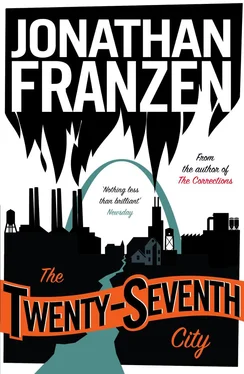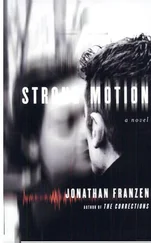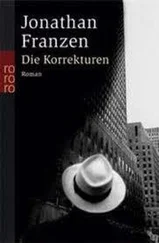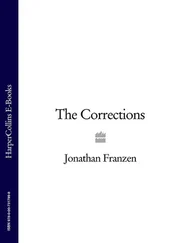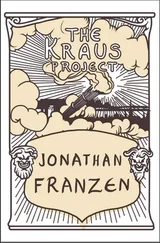Jonathan Franzen

4th Estate
An imprint of HarperCollins Publishers 1 London Bridge Street London SE1 9GF
www.4thEstate.co.uk
This eBook first published in Great Britain by 4th Estate in 2017
Copyright © Jonathan Franzen 1988
Cover design and illustration by Richard Bravery
Jonathan Franzen asserts the moral right to be identified as the author of this work
A catalogue record for this book is available from the British Library
The author is grateful for permission to quote the following copyrighted works: ‘The Red Wheel-Barrow’ from William Carlos Williams: Collected Poems 1909–1939, Volume I , copyright 1938. Reprinted by permission of Carcanet Press Limited. The ‘Chicken of the Sea’ jingle, reprinted by permission of Tri-Union Seafoods, LLC.
The author wishes to thank the Artists Foundation of Boston and the Massachusetts Council for the Arts and Humanities for their support in 1986
All rights reserved under International and Pan-American Copyright Conventions. By payment of the required fees, you have been granted the non-exclusive, non-transferable right to access and read the text of this e-book on-screen. No part of this text may be reproduced, transmitted, down-loaded, decompiled, reverse engineered, or stored in or introduced into any information storage and retrieval system, in any form or by any means, whether electronic or mechanical, now known or hereinafter invented, without the express written permission of HarperCollins
Source ISBN: 9781841157481
Ebook Edition © November 2017 ISBN: 9780007383245
Version: 2017-11-27
‘A huge and masterly drama… gripping and surreal and overwhelmingly convincing’
Newsweek
‘Permeated with intelligence, beauty, and subversive humor, teeming with life, always on the edge of igniting from its own repressed energy… Franzen is an extravagantly talented writer’
Chicago Tribune
‘Franzen’s tour de force (to call it a “first novel” is to do it an injustice) is a sinister fun-house-mirror reflection of urban America in the 1980s… There’s a lot of reality out there. The Twenty-Seventh City , in its larger-than-life way, is a brave and exhilarating attempt to master it’
Seattle Times
‘Franzen goes for broke here – he’s out to expose the soul of a city and all the bloody details of the way we live… A book of range, pith, intelligence’
Vogue
‘Mr Franzen has talent to spare. His is a worthwhile entertainment, this picaresque tale the principal vagabond of which is its own sinuous plot’
Wall Street Journal
To my parents
Contents
Cover
Title Page
Copyright
Praise
Dedication
Map
Chapter 1
Chapter 2
Chapter 3
Chapter 4
Chapter 5
Chapter 6
Chapter 7
Chapter 8
Chapter 9
Chapter 10
Chapter 11
Chapter 12
Chapter 13
Chapter 14
Chapter 15
Chapter 16
Chapter 17
Chapter 18
Chapter 19
Chapter 20
Chapter 21
Chapter 22
Chapter 23
Chapter 24
Keep Reading …
About the Author
Also by the Author
About the Publisher
This story is set in a year somewhat like 1984 and in a place very much like St. Louis. Many actual public achievements, policies and products have been attributed to various characters and groups; these should not be confused with any actual person or organization. The lives and opinions of the characters are entirely imaginary .
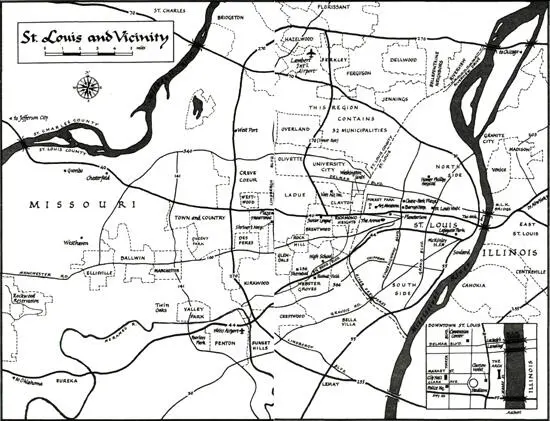
In early June Chief William O’Connell of the St. Louis Police Department announced his retirement, and the Board of Police Commissioners, passing over the favored candidates of the city political establishment, the black community, the press, the Officers Association and the Missouri governor, selected a woman, formerly with the police in Bombay, India, to begin a five-year term as chief. The city was appalled, but the woman—one S. Jammu—assumed the post before anyone could stop her.
This was on August 1. On August 4, the Subcontinent again made the local news when the most eligible bachelor in St. Louis married a princess from Bombay. The groom was Sidney Hammaker, president of the Hammaker Brewing Company, the city’s flagship industry. The bride was rumored to be fabulously wealthy. Newspaper accounts of the wedding confirmed reports that she owned a diamond pendant insured for $11 million, and that she had brought a retinue of eighteen servants to staff the Hammaker estate in suburban Ladue. A fireworks display at the wedding reception rained cinders on lawns up to a mile away.
A week later the sightings began. An Indian family of ten was seen standing on a traffic island one block east of the Cervantes Convention Center. The women wore saris, the men dark business suits, the children gym shorts and T-shirts. All of them wore expressions of controlled annoyance.
By the beginning of September, scenes like this had become a fixture of daily life in the city. Indians were noticed lounging with no evident purpose on the skybridge between Dillard’s and the St. Louis Centre. They were observed spreading blankets in the art museum parking lot and preparing a hot lunch on a Primus stove, playing card games on the sidewalk in front of the National Bowling Hall of Fame, viewing houses for sale in Kirkwood and Sunset Hills, taking snapshots outside the Amtrak station downtown, and clustering around the raised hood of a Delta 88 stalled on the Forest Park Parkway. The children invariably appeared well behaved.
Early autumn was also the season of another, more familiar Eastern visitor to St. Louis, the Veiled Prophet of Khorassan. A group of businessmen had conjured up the Prophet in the nineteenth century to help raise funds for worthy causes. Each year He returned and incarnated Himself in a different leading citizen whose identity was always a closely guarded secret, and with His non-denominational mysteries He brought a playful glamour to the city. It had been written:
There on that throne, to which the blind belief Of millions rais’d him, sat the Prophet-Chief, The Great Mokanna. O’er his features bung The Veil, the Silver Veil, which he bad flung In mercy there, to bide from mortal sight His dazzling brow, till man could bear its light .
It rained only once in September, on the day of the Veiled Prophet Parade. Water streamed down the tuba bells in the marching bands, and trumpeters experienced difficulties with their embouchure. Pom-poms wilted, staining the girls’ hands with dye, which they smeared on their foreheads when they pushed back their hair. Several of the floats sank.
On the night of the Veiled Prophet Ball, the year’s premier society event, high winds knocked down power lines all over the city. In the Khorassan Room of the Chase-Park Plaza Hotel, the debbing had just concluded when the lights went out. Waiters rushed in with candelabras, and when the first of them were lit the ballroom filled with murmurs of surprise and consternation: the Prophet’s throne was empty.
Читать дальше
